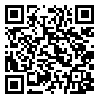Volume 7, Issue 1 (1-2022)
CJHR 2022, 7(1): 25-34 |
Back to browse issues page
Download citation:
BibTeX | RIS | EndNote | Medlars | ProCite | Reference Manager | RefWorks
Send citation to:



BibTeX | RIS | EndNote | Medlars | ProCite | Reference Manager | RefWorks
Send citation to:
Rahimi F, Pouresmaeil M, Rafiei F, Hazrati- Meimaneh Z, Sabeti F, Amini N et al . Association Between Virtual Social Networks and Health-Promoting Lifestyles in Medical University Students. CJHR 2022; 7 (1) :25-34
URL: http://cjhr.gums.ac.ir/article-1-224-en.html
URL: http://cjhr.gums.ac.ir/article-1-224-en.html
Fatemeh Rahimi1 

 , Mahnaz Pouresmaeil2
, Mahnaz Pouresmaeil2 

 , Fatemeh Rafiei3
, Fatemeh Rafiei3 

 , Zahra Hazrati- Meimaneh4
, Zahra Hazrati- Meimaneh4 

 , Farahnaz Sabeti4
, Farahnaz Sabeti4 

 , Najmolmolook Amini5
, Najmolmolook Amini5 

 , Somaieh Borjalilu *6
, Somaieh Borjalilu *6 




 , Mahnaz Pouresmaeil2
, Mahnaz Pouresmaeil2 

 , Fatemeh Rafiei3
, Fatemeh Rafiei3 

 , Zahra Hazrati- Meimaneh4
, Zahra Hazrati- Meimaneh4 

 , Farahnaz Sabeti4
, Farahnaz Sabeti4 

 , Najmolmolook Amini5
, Najmolmolook Amini5 

 , Somaieh Borjalilu *6
, Somaieh Borjalilu *6 


1- Department of Health Education and Promotion, School of Public Health, Tehran University of Medical Sciences, Tehran, Iran
2- Department of Health Education and Promotion, School of Health, Iran University of Medical Sciences, Tehran, Iran
3- Department of Biostatistics and Epidemiology, School of Public Health, Tehran University of Medical Sciences, Tehran, Iran.
4- South Tehran Health Center, Tehran University of Medical Sciences, Tehran, Iran.
5- Department of Public Health, School of Public Health and Safety, Shahid Beheshti University of Medical Sciences, Tehran, Iran.
6- Department of Virtualization, Virtual School, Tehran University of Medical Sciences, Tehran, Iran. ,sborjalilu@sina.tums.ac.ir
2- Department of Health Education and Promotion, School of Health, Iran University of Medical Sciences, Tehran, Iran
3- Department of Biostatistics and Epidemiology, School of Public Health, Tehran University of Medical Sciences, Tehran, Iran.
4- South Tehran Health Center, Tehran University of Medical Sciences, Tehran, Iran.
5- Department of Public Health, School of Public Health and Safety, Shahid Beheshti University of Medical Sciences, Tehran, Iran.
6- Department of Virtualization, Virtual School, Tehran University of Medical Sciences, Tehran, Iran. ,
Abstract: (2436 Views)
Background: Medical students make extensive use of virtual social networks, especially in the era of the coronavirus pandemic, so that their health-promoting behaviors may be adversely affected.
Objective: This study aimed to determine the relationship between the use of virtual social networks and a health-promoting lifestyle among postgraduate medical students.
Materials & Methods: This cross-sectional study was conducted among post-graduate students studying at Tehran University of Medical Sciences in 2020. A total of 240 students were included using quota sampling method. Data were collected via valid and reliable questionnaires consisting of socio-demographic information, health-promoting lifestyle Profile-II, and virtual social networks utilization. The spearman test was employed to evaluate the association between virtual social networks and lifestyle.
Results: The mean age of participants was 32.21±7.45 and 75.4% were female. The mean score of lifestyle was 138.28±21.18, while the mean score of virtual social networks utilization was (64.55±11.40). There was a statistically significant correlation between utilization of virtual social networks and total score of lifestyle (r=-0.189, P=0.003), as well as physical activity (r=-0.232, P=0.001), nutrition (r=-0.179, P=0.005), and self-actualization (r=-0.154 , P=0.017) of health promoting lifestyle. Linear regression model showed that utilization of internet and social networks (B=-0.37, P=0.02), utilization in the time between 12 pm and 8 am (B=-14.3, P=0.011) were independently associated with Health Promoting Lifestyle score.
Conclusion: This study showed that more than half of students had a healthy lifestyle (55%). The average score of virtual social networks used by students was high. Utilization of internet and the time of utilization were independent predictors of Health Promoting Lifestyle score.
Objective: This study aimed to determine the relationship between the use of virtual social networks and a health-promoting lifestyle among postgraduate medical students.
Materials & Methods: This cross-sectional study was conducted among post-graduate students studying at Tehran University of Medical Sciences in 2020. A total of 240 students were included using quota sampling method. Data were collected via valid and reliable questionnaires consisting of socio-demographic information, health-promoting lifestyle Profile-II, and virtual social networks utilization. The spearman test was employed to evaluate the association between virtual social networks and lifestyle.
Results: The mean age of participants was 32.21±7.45 and 75.4% were female. The mean score of lifestyle was 138.28±21.18, while the mean score of virtual social networks utilization was (64.55±11.40). There was a statistically significant correlation between utilization of virtual social networks and total score of lifestyle (r=-0.189, P=0.003), as well as physical activity (r=-0.232, P=0.001), nutrition (r=-0.179, P=0.005), and self-actualization (r=-0.154 , P=0.017) of health promoting lifestyle. Linear regression model showed that utilization of internet and social networks (B=-0.37, P=0.02), utilization in the time between 12 pm and 8 am (B=-14.3, P=0.011) were independently associated with Health Promoting Lifestyle score.
Conclusion: This study showed that more than half of students had a healthy lifestyle (55%). The average score of virtual social networks used by students was high. Utilization of internet and the time of utilization were independent predictors of Health Promoting Lifestyle score.
Keywords: Online Social Networking, Health-Related Behaviors, Healthy Lifestyle, Universities, Students
Article Type: Original Contributions |
Subject:
Public Health
Received: 2021/09/5 | Accepted: 2021/12/26 | Published: 2022/01/1
Received: 2021/09/5 | Accepted: 2021/12/26 | Published: 2022/01/1
Send email to the article author
| Rights and permissions | |
 |
This work is licensed under a Creative Commons Attribution-NonCommercial 4.0 International License. |






